Nu gespreide betaling mogelijk op het juweel van uw dromen! Vraag ons naar de details. Gratis verzekerde verzending van alle orders!
Weekly Antique Jewelry Herald (archive 2013)
Specific Art Nouveau Jewelry
Female faces on pendants, lockets and brooches
 |
Art Nouveau (French for New Style) is an international movement and style of art, architecture and applied art - especially the decorative arts - that peaked in popularity at the turn of the 20th century (1890–1905).
The name "Art Nouveau" is French for "new art". It is also known as Jugendstil, German for "youth style", named after the magazine Jugend, which promoted it, and in Italy, Stile Liberty from the department store in London, Liberty & Co., which popularised the style, and in Holland as “Sla-olie-stijl”, Dutch for “salad oil style” after a advertisement poster for this product that was made in that style.
A reaction to academic art of the 19th century, it is characterized by organic, especially floral and other plant-inspired motifs, as well as highly stylized, flowing curvilinear forms. Art Nouveau is an approach to design according to which artists should work on everything from architecture to furniture, making art part of everyday life. Although Art Nouveau fell out of favour with the arrival of 20th-century modernist styles, it is seen today as an important bridge between the historicism of Neoclassicism and modernism.
Our collection in:
Euro's
US Dollars
British Pounds
Japanese Yens
Australian Dollars
Canadian Dollars
Under The Mistletoe... In The Mistletoe...
Who cares?
They're both worth a kiss.
 |
LAST DAY TO ORDER
FOR A PRE-CHRISTMAS DELIVERY !!!
(and free shipping of course)
Our collection in:
Euro's
US Dollars
British Pounds
Japanese Yens
Australian Dollars
Canadian Dollars
The Garden of Adin's Poulterer Presents:
Fattened Pheasant for the Jolly Vegetarian!
 |
All orders till December 22st
will be delivered in time for Christmas !!!
Our collection in:
Euro's
US Dollars
British Pounds
Japanese Yens
Australian Dollars
Canadian Dollars
Let it snow, let it snow, let it snow...
 |
All orders till December 22st
will be delivered in time for Christmas !!!
Our collection in:
Euro's
US Dollars
British Pounds
Japanese Yens
Australian Dollars
Canadian Dollars
Most Pertinent Weather Forecast Ever!
It's going to be a sparkling white Christmas !
 |
All orders till December 22st
will be delivered in time for Christmas !!!
Our collection in:
Euro's
US Dollars
British Pounds
Japanese Yens
Australian Dollars
Canadian Dollars
Elegant antique cross over ring with rubies and diamonds
Or as the French so romantically call it:
a "toi et moi" (you and me)
 |
This late-Victorian ring is made around 1900. The Victorian era is known for its eclectic revival and interpretation of historic styles and the introduction of cross-cultural influences from the middle east and Asia in furniture, fittings, and Interior decoration. Victorian design is widely viewed as heavily indulged in an excess of ornament.
This ring shows the transition of styles from Victorian to the styles of the 20th century. The Arts and Crafts movement, the aesthetic movement, Anglo-Japanese style, and Art Nouveau style who all have their beginnings in the late Victorian era.
What are the scientific similarities...
between an antique ring and a Romanesco broccoli?
 |
Absolutely nothing, but they make for a great picture!
One of our many new arrivals...
Biedermeier skillfully carved ivory brooch
two dogs standing in flowery framework
 |
Different times, different opinions and morals. In the first quarter of the 19th Century people's attitude towards (what are now, because of that attitude) endangered species, was not exactly the same as our days (to put it mildly). We strongly condemn the use of ivory in our days, but in our trade we can run into some beautiful antique pieces of ivory like this one.
And what a beauty it is! The meticulous refined sculpting/engraving is a joy for the eye. Look at the collar holding the dogs together, or their legs! We have never seen such fine work and to imagine that it lasted already almost 200 years!
This brooch is a typical example of mid-European Biedermeier art. The Biedermeier period refers to an era in Central Europe during which the middle-class grew and arts appealed to common sensibilities in the historical period between 1815, the year of the Congress of Vienna at the end of the Napoleonic Wars, and 1848, the year of the European revolutions.
Month Stones in Antique jewelry
(Present Suggestions Part 3)
Dear fellow antique and estate jewelry afficionado,
We would like to show you the many ways one can look at antique jewelry. There is just nothing dusty and old-fashioned about it. Wearing antique jewelry is making a statement of good taste!
And there are so many ways how to browse through our collection... per object, per theme, per color, per month stone, per price, per age, per etc. etc. etc. For example, click on the pictures below and you see our special collection of antique and estate jewelry set with month dedicated stones.
 antique jewelry with month stones for January |
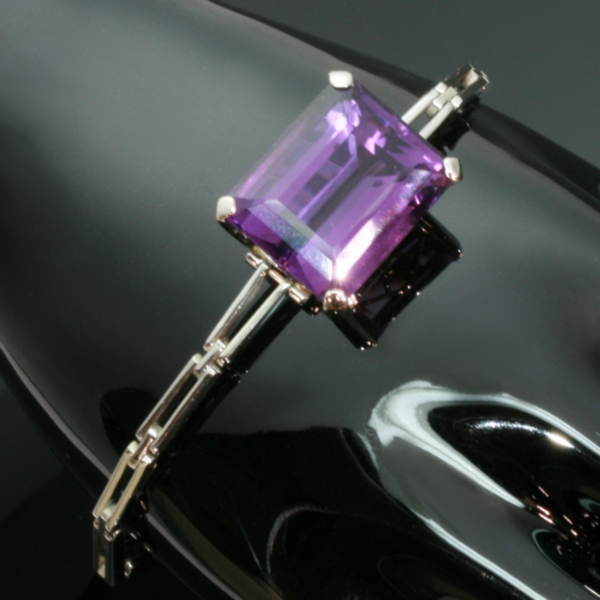 antique jewelry with month stones for February |
 antique jewelry with month stones for March |
 antique jewelry with month stones for April |
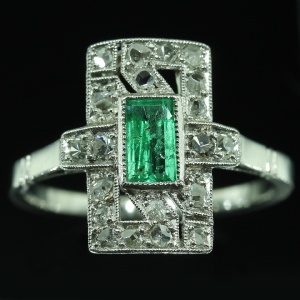 antique jewelry with month stones for May |
 antique jewelry with month stones for June |
 antique jewelry with month stones for July |
 antique jewelry with month stones for August |
 antique jewelry with month stones for September |
 antique jewelry with month stones for October |
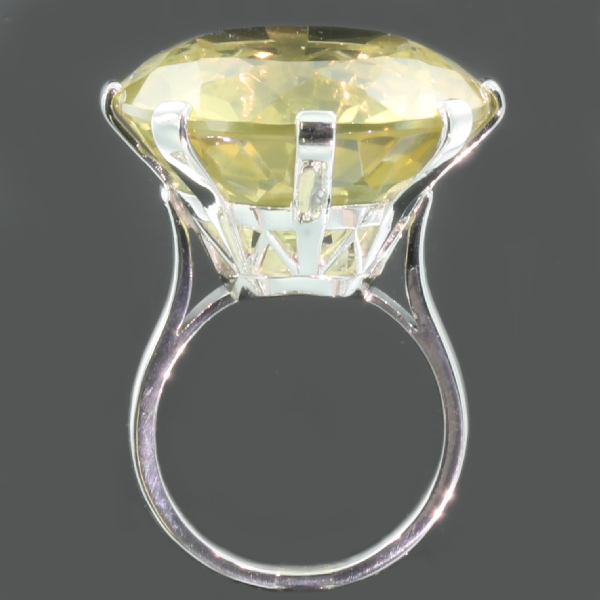 antique jewelry with month stones for November |
 antique jewelry with month stones for December |
P.S. Eleven months a year we try to amuse you with a weekly cute antique jewelry related mail. However, this time of the year we take the liberty of sending you some mails without any special picture or back-ground information on symbolism, style or era. There will be just a list of present suggestions.
Don't worry, these few mails will be as much "hard marketing" as you can expect from us in a whole year. Rest assured that it will take another year before we will be bragging again about all those beautiful pieces of antique and estate jewelry that can be bought online from us and that it will take only about 2 or 3 working days from the moment of buying to the moment it is delivered at your doorstep.
And remember, shipping is free!
One of our many new arrivals...
Belle Epoque Diamond & Sapphire Ring
 |
The Belle Époque (French for "Beautiful Era") was a period in European social history that began during the late 19th century from the Franco-Prussian War (1870-1871) and lasted until World War I (1914-18).
Occurring during the time of the French Third Republic and the German Empire, the "Belle Époque" was named in retrospect, when it began to be considered a "golden age" the major powers of Europe, new technologies improved lives and the commercial arts adapted Renaissance and eighteenth-century styles to modern forms.
In the newly rich United States, emerging from the Panic of 1873, the comparable epoch was dubbed the Gilded Age. In the United Kingdom, this epoch overlaps the end of what is called the Victorian Era there and the period named the Edwardian Era.
In the Belle Époque cheap coal and cheap labour contributed to the cult of the orchid and made possible the perfection of fruits grown under glass, as the apparatus of state dinners extended to the upper classes; champagne was perfected during the Belle Époque. Exotic feathers and furs were more prominently featured in fashion than ever before, as haute couture was invented in Paris, the centre of the Belle Époque, where fashion began to move in a yearly cycle; in Paris restaurants such as Maxim's achieved a new splendour and cachet as places for the rich to parade, and the Opéra Garnier devoted enormous spaces to staircases as similar show places.
After mid-century, railways linked all the major cities of Europe to spa towns like Biarritz and Deauville; their carriages were rigorously divided into first-class and second-class, but the super-rich now began to commission private railway coaches, as exclusivity was a hallmark of opulent luxury. Bohemian lifestyles gained a different glamour, pursued in the cabarets of Montmartre.
Present Suggestions Part 2
Antique & Estate Jewelry Per Color
Dear fellow antique and estate jewelry afficionado,
This time we present you a very convienient manner of browsing through our collection! Did you you know you that on our site you can select the colors that are used in the antique jewelry? Underneath we give you some searches in various colors and objects. Have fun!
Ah! One more good thing..... Shipping is free!
antiqually yours,
The Adin team
 antique rings with black |
 antique earrings with black |
 antique brooches with black |
 antique pendants with black |
 all jewelry with black |
 antique rings with blue |
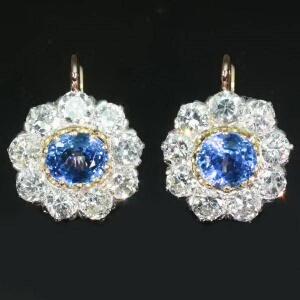 antique earrings with blue |
 antique brooches with blue |
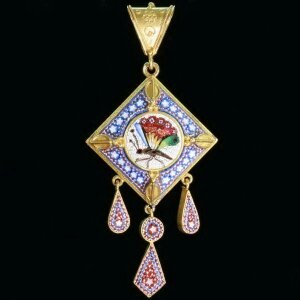 antique pendants with blue |
 all jewelry with blue |
 antique rings with green |
 antique earrings with green |
 antique brooches with green |
 antique pendants with green |
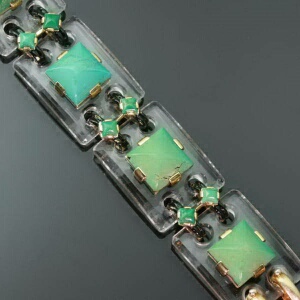 all jewelry with green |
 antique rings with red |
 antique earrings with red |
 antique brooches with red |
 antique pendants with red |
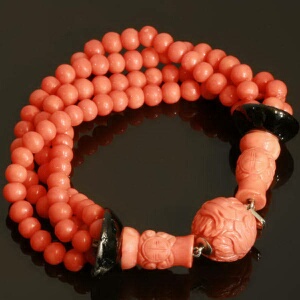 all jewelry with red |
 antique rings with white |
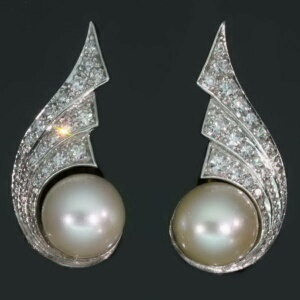 antique earrings with white |
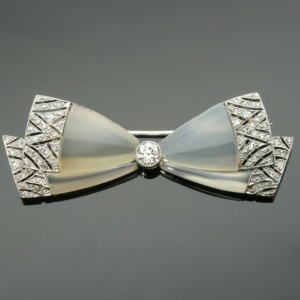 antique brooches with white |
 antique pendants with white |
 all jewelry with white |
P.S. Eleven months a year we try to amuse you with a weekly cute antique jewelry related mail. However, this time of the year we take the liberty of sending you some mails without any special picture or back-ground information on symbolism, style or era. There will be just a list of present suggestions.
Don't worry, these few mails will be as much "hard marketing" as you can expect from us in a whole year. Rest assured that it will take another year before we will brag again about all those beautiful pieces of antique and estate jewelry that can be bought online from us and that it will take only about 2 or 3 working days from the moment of buying to the moment it is delivered at your doorstep.
Art Deco Ring
so tempting......
 |
 |
 |
|
 |
|
| Click here for more info on this diamond and onyx Art Deco ring. | |
Art Nouveau Beauty
In The Garden of Adin
 |
 |
 |
|
 |
|
| Click here for more info on this Art Nouveau jewel with plique ajour enamel. | |
|
A splendid Art Nouveau enamelled rose gold combined pendant-brooch featuring two old mine diamonds, a rose cut diamond and a hanging pearl. It was designed via a technique called plique a jour in which the translucent enamel has been fired between thin gold wires to create the delicate veined wings adorning this brooch. Precise intricacies of soft color transitions within the face, along with delicate enamelling of the flower render this to be a true collector’s artefact. Undoubtedly a very refined piece and in extremely good condition; this beauty is positively wearable either as a striking brooch or pendant. |
Oh Darling, you don't have to buy me a big present this Christmas!
(They have small expensive pieces at Adin too)
 |
Antique Jewelry Present Suggestions
(part 1)
Dear fellow antique and estate jewelry afficionado,
Eleven months a year we try to amuse you with a weekly cute antique jewelry related mail. However, this time of the year we take the liberty of sending you some mails without any special picture or back-ground information on symbolism, style or era. There will be just a list of present suggestions.
Don't worry, these few mails will be as much "hard marketing" as you can expect from us in a whole year. Rest assured that it will take another year before we will brag again about all those beautiful pieces of antique and estate jewelry that can be bought online from us and that it will take only about 2 or 3 working days from the moment of buying to the moment it is delivered at your doorstep.
Ah! One more good thing..... Shipping is free!
antiqually yours,
The Adin team
antique jewelry under $1,000
 rings up to $1000 |
 earrings up to $1000 |
 pendants up to $1000 |
 brooches up to $1000 |
 all jewelry up to $1000 |
antique jewelry between $1,000 and $2,500
 rings up to $2,500 |
 earrings up to $2,500 |
 pendants up to $2,500 |
 brooches up to $2,500 |
 all jewelry up to $2,500 |
antique jewelry between $2,500 - $7,000
 rings up to $7,000 |
 earrings up to $7,000 |
 pendants up to $7,000 |
 brooches up to $7,000 |
 all jewelry up to $7,000 |
antique jewelry between $7,000 - $15,000
 rings up to $15,000 |
 earrings up to $15,000 |
 pendants up to $15,000 |
 brooches up to $15,000 |
 all jewelry up to $15,000 |
antique jewelry $15,000 and above
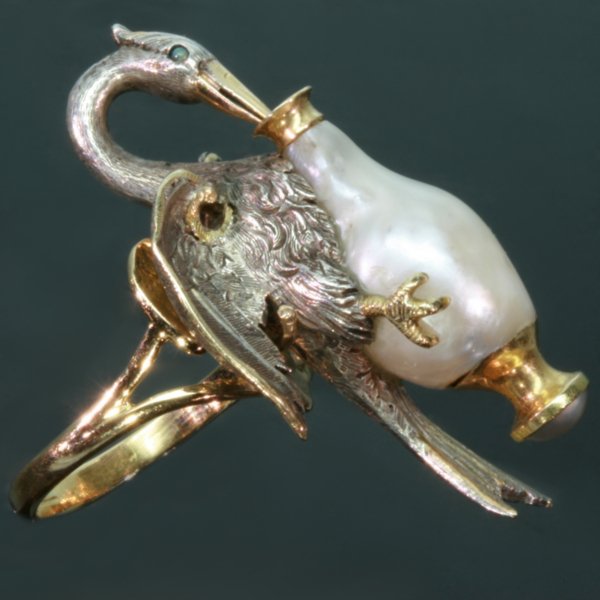 rings $15,000 + |
 earrings $15,000 + |
 necklaces $15,000 + |
 brooches $15,000 + |
 all jewelry $15,000 + |
Going back to the roots....
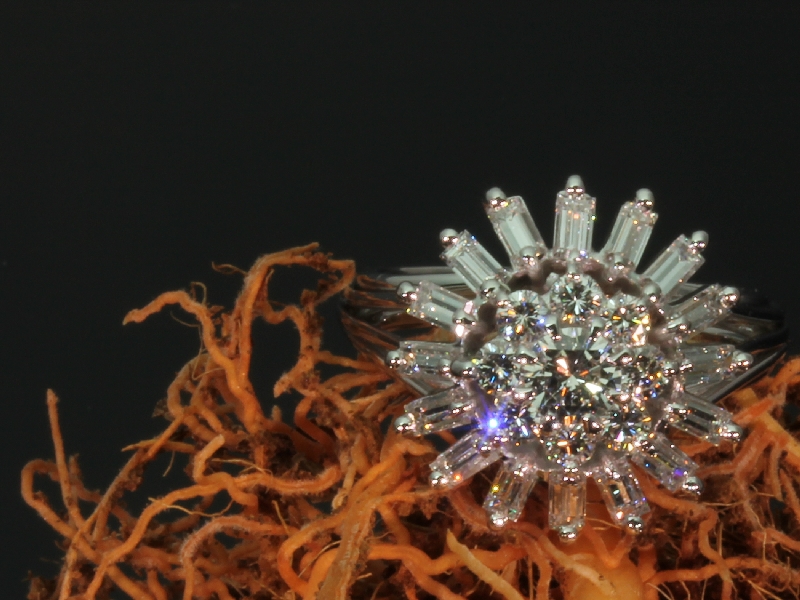 |
Go Green This Winter!
 |
The Kutchinsky jewelry store was established in London in 1890. The Kutchinsky's came from Poland where they had been jewelers for centuries (they were also jewelers to the Court of Ludwig of Bavaria). After World War II, Kutchinsky pioneered with the use of platinum in fine jewelry and their jewelers shop in Commercial Road soon became known to lovers of fine jewelry. Then, in the late Fifties, they moved their business to London's Knightsbridge (where you still can find a Kutchinsky store although it's taken over by Moussaieff - another illustrious name in the world of high quality jewelry). Kutchinsky is still known for its high quality jewelry and use of precious stones.
Memorial ring
After 200 years still in top condition!
 |
 Click a picture to get to the descriptive page (or click here for all our rings) |
 |
 |
 |
|
 |
 |
This is a so-called memorial ring. From the mid 1700's till the early 1800's the well-to-do would predestinate a certain part of their financial legacy to have these memory-rings made, once they passed away. In their testament they would clearly stipulated who would get such ring. These rings were then worn by their heirs in memory of their beloved deceased. In our days, these rings are sought after by collectors.
On the outside of the shank (bottom part of ring) which is enameled with black and white enamel we can read in gold Gothic letters: "IN MEMORY OF". And on the inside the ring has been hand engraved with: "Mary Ann Edmonds, 06, 26 Jan, 1822 Oct 19".
To read and see more from this ring (even a movie) click one of the pictures above.
Developments in male construction phases
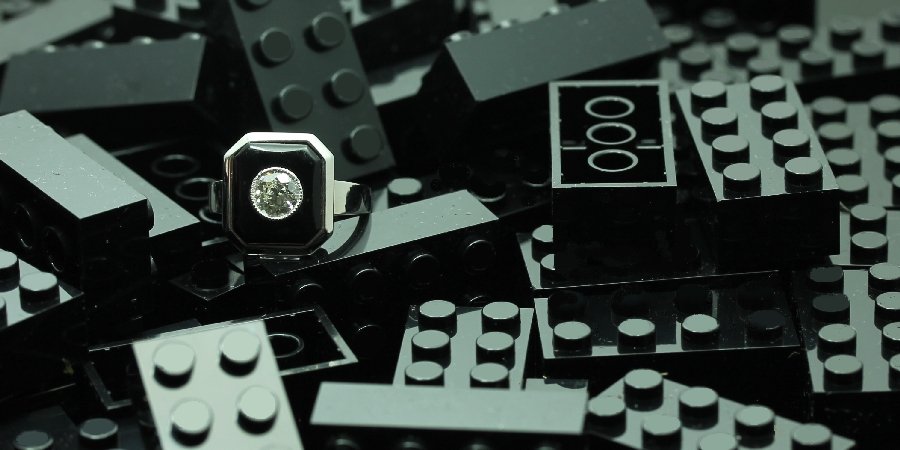 |
Christiaan Frederik (Chris) Steenbergen completed his training goldsmithing during World War II at the Institute of Applied Art in Amsterdam (IvKNO), currently know as the Rietveld Academy. In 1946 he got his master sign and he lived and worked as an independent jeweler at the Leliegracht in Amsterdam. After his graduation he worked briefly with other well known jewelry designers Archibald Dumbar and Esther Swart-Hudig.
Steenbergen took part in national and international exhibitions. On the occasion of his 65th birthday a retrospective took place in Museum Boijmans - Van Beuningen in Rotterdam. He received the award by the Foundation for Visual Arts, Design and Architecture in 2000 for his complete ouvre. As a member of the Society of Cooperating Craft Artists (GSA) he exhibited his jewelry regularly.
Characteristic of Steenbergen's jewelery designs are sleek and simple shapes that arise from some basic shapes like the square, the circle and the ellipse. In combination with gold and silver Steenbergen sometimes processed other materials such as colored perspex, ebonite, rock crystal and slate. The developments in the visual arts was a source of his inspiration. Bauhaus, the sculptures by artists such as Henry Moore and Antoine Pevsner and abstract constructivism also influenced his designs. Later, architecture was a big source of inspiration to him.
Antique Big Coral Beads Strand
Extremely Rare!
 |
WOW, WOW and again WOW! This must be the most special coral necklace we ever had and most likely we will ever have. The beads are huge! And there are so many! Fifty big beads!
From time to time we find an antique coral necklace with perhaps just one big bead of this quality in its center. But to find one necklace with such an amazing collection of big and good quality beads is rarer than a rarity.
The beads are not strung but wired on 14K red gold. The closure is hidden inside a magnificent antique gold filigree sphere, typically Dutch 19th Century. We were amazed when we found it and actually we still are. What a beauty!
Halloween dresscode 2013
 |
Harvest time in The Garden of Adin...
a great time for plucking its fruits!
 |
(WE NOW OFFER FREE SHIPPING)
This ring is made around 1910 in a style that is known as "The Belle Époque". The Belle Époque (French for "Beautiful Era") was a period in European social history that began during the late 19th century and lasted until World War I.
Occurring during the time of the French Third Republic and the German Empire, the "Belle Époque" was named in retrospect, when it began to be considered a "golden age" the major powers of Europe, new technologies improved lives and the commercial arts adapted Renaissance and eighteenth-century styles to modern forms.
In the newly rich United States, emerging from the Panic of 1873, the comparable epoch was dubbed the Gilded Age. In the United Kingdom, this epoch overlaps the end of what is called the Victorian Era there and the period named the Edwardian Era.
This week's bouquet.....
 |
Just for the fun of sharing a nice picture.
The harvest of aged gold....
 |
The harvest of aged gold is the recollection and abundance of blessing previously secured.
(free after Marcus Tullius Cicero - Roman philosopher 106 BC - 43 BC)
Dutch region specific antique brooch
 |
This jewel is typical for Zeeland, the most southern coastal province of the Netherlands (Holland). Dutch regional jewely has a distinctive look and easily recognisable for the trained eye. The brooch is one-of-a-kind as we have never seen this type of jewel set with so many diamonds before. It must have custom made around 1850 for a very rich woman, and can be worn both as brooch and as pendant.
Time flies and butterflies too
in The Garden of Adin
 |
When life gives you a lemon
you could make lemonade
(but better mount it in a ring)
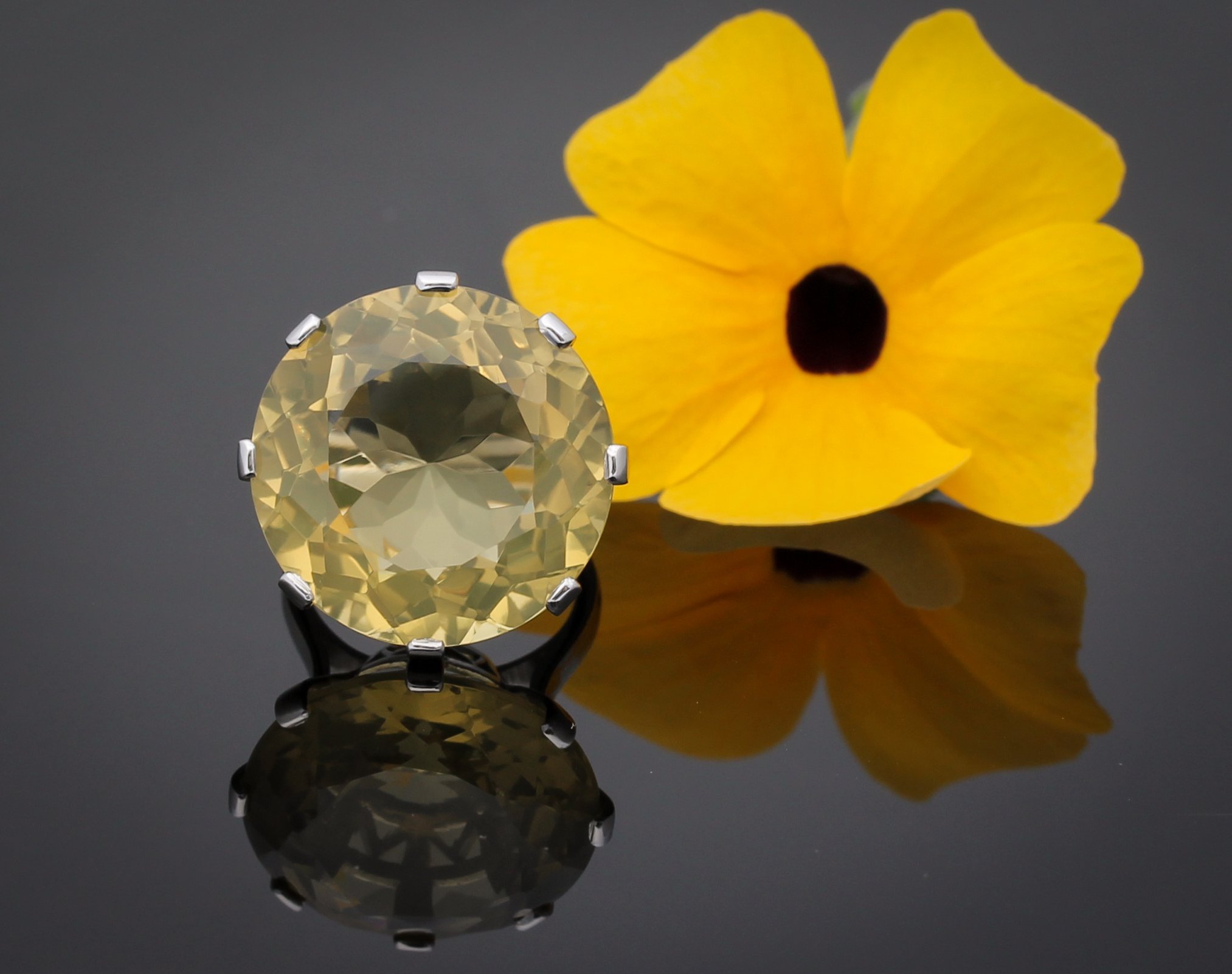 |
||
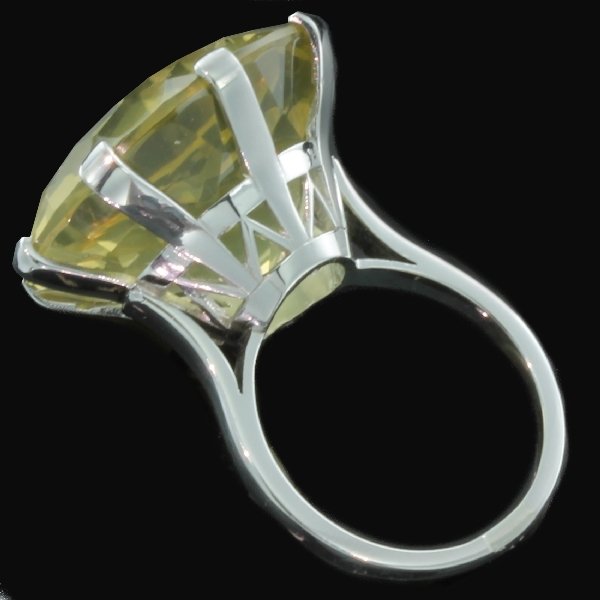 |
 |
 |
This really humongous lemon citrine, with a weight of 37 carats, is mounted in a French platinum Art Deco ring. Not really a sour gift to give or receive. Click the pictures to get to its descriptive page for more explanation.
Carpe Diem
(Latin for "gather ye rings while ye may")
 €11,000 |
 €11,000 Click the pictures to get to their descriptive page (or click here for all our rings) |
 €4,950 |
 €3,950 |
 €3,750 |
|
 €3,450 |
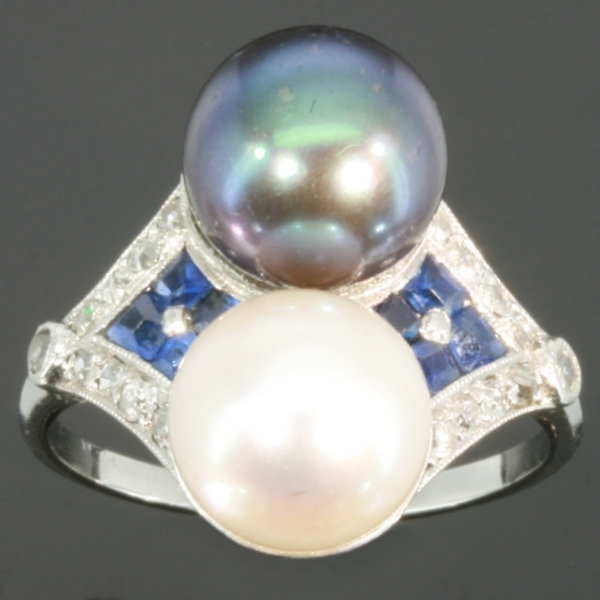 €3,450 |
Carpe diem is a phrase from a Latin poem by Quintus Horatius Flaccus (65 BC – 8 BC), that has become an aphorism. It is popularly translated as "seize the day". However a more accurate translation of "Carpe diem" would be "enjoy the day" or "pluck the day (as it is ripe)".
The "Carpe diem" phrase is often misinterpreted and missused in contemporary popular culture. It's not about ignoring one's future, but rather not trusting that everything is going to fall into place for you someday and doing those things today. So have a look at these rings and wonder if you really have to wait with your purchase :-)
Life is like a box of chocolates.
You never know what you're gonna get.
 |
Another game of hide and seek
in the Garden of Adin
 |
Just for the joy of sharing a nice picture.
One sweet date to remember...
 |
Or:
Darling ever since our first date...
Let's date more serious now; what do you think?
I love you since our first date...
Let's make it a special date...
Now this will be a date you'll remember...
Men are terrible with dates...
Never on the first date...
The sweetest date ...
That comes from all that dating...
Let's make our date more serious now...
The ugly duck ring
 |
Once upon a time there was a sad and lonely ring, suffering much from incomprehension. Scornfully he was called, “ugly duck ring”. Spending much of his time alone, hidden in a drawer. But one day he wandered from his house and found its way to The Garden of Adin, where he was understood and adored for its beauty. There he was called “the snugly luck ring”. And since then the snugly luck ring happily waits there for someone to give him a new warm and happy home.
Soothe your Great Gatsby fever the natural way
with the elemental products of the Garden of Adin
 €8,750 |
 €16,500 Click the pictures to get to their descriptive page (or click here for our 20th Century Jewelry) | 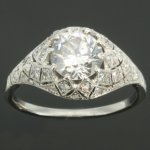 €7,250 |
 €14,500 |
 €8,750 |
|
 €3,625 |
 €16,000 |
Having the Great Gatsby fever can be heartbreaking. It's no wonder so many people grab over-the-counter (read: “reproduction”) Art Deco-ish jewelry to soothe their urge! Unfortunately, there isn't much, if any, original Art Deco jewelry available in modern jewelry stores. Luckily for you now there is Adin!
There is no doubt that the original Art Deco jewelry from The Garden of Adin is key to combat the terrible Great Gatsby fever. Pampered by the Gardener in the fertile soil of The Garden of Adin, our original Art Deco jewelry achieved its full Gatsby fever-fighting potential.
Therefore it is with great delight that we offer our all 100% original Art Deco jewelry for you to try!
From goddess to femme fatale
Female portrayal through the centuries
 €4,450 |
 €18,500 Click the pictures to get to their page (or click here for all our portrait jewelry. |
 €3,750 |
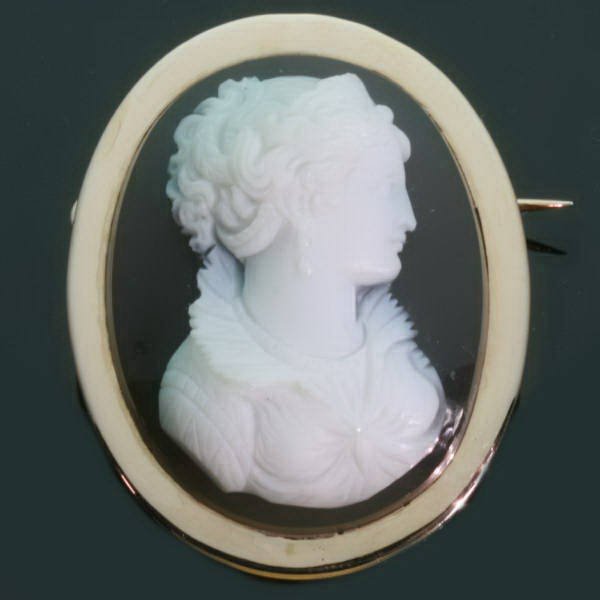 €2,750 |
 €4,250 |
|
 €3,750 |
 €2,750 |
|
 |
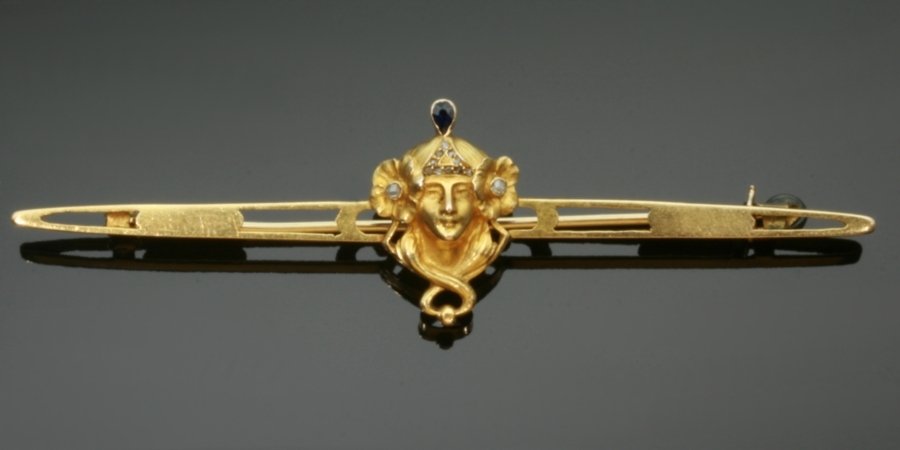 €2,350 |
 |
Noble ladies from the Garden of Adin
A wife in precious metal who can find?
She is worth far more with rubies or other gems.
Her admirers have full confidence in her
and lack nothing of value.
She brings good, not harm,
all the days of their life.
(Freely inspired by Proverbs 31:10-31 "The Wife of Noble Character")
Plique ajour enamel earrings
from The Garden of Adin
where true beauty and splendour meet
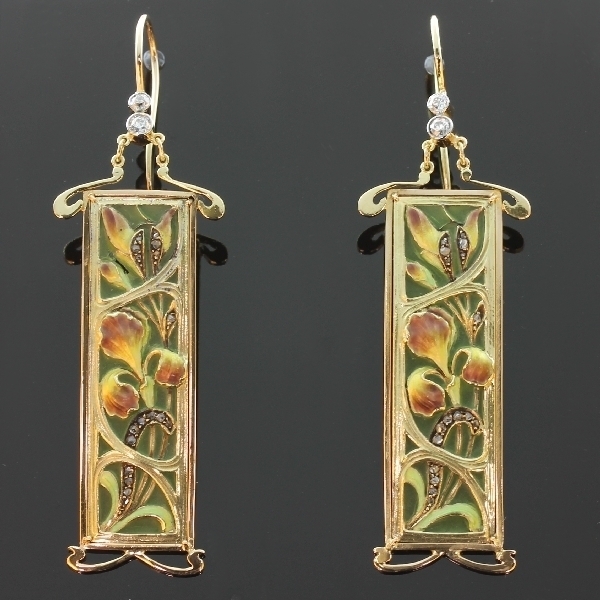 |
Art Nouveau long pendent earrings - Art Nouveau as how you want it to be. The two rectangular enameled plates are made in a very special way; the so-called plique ajour enameling technique. Plique ajour comes from the French "plique-à-jour" meaning "braid letting in daylight". It is a very challanging vitreous enamelling technique where the enamel is applied in cells to give it a stained glass appearance.
However these earrings were not born as earrings. Most likely they started their life as decorative parts in a chain or dog-collar necklace in the Art Nouveau period, somewhere between 1890 and 1900. But when we bought them they were mounted together in one brooch. This brooch (actually more a bulky gold framework with a needle at the back) had all the characteristics from being made somewhere between 1930 and 1950 and was specially made to hold the two plaques.
And because the framework wasn't original and doing not much justice to the high quality of the original Art Nouveau work, we decided to remount them in a setting that would do them justice. So our master goldsmith carefully seperated them from their bulky framework and designed a refined mounting that would render their true beauty. He did so, inspired by the Art Nouveau style and imagining what and how a goldsmith from the Art Nouveau period would design them. The result is astonishing!
Ode to the ear and its jewel
Ode to the ear and its jewel
What merry fairy, oh pretty, delicious ear,
gave thee the power through centuries to maintain
a charm that soothes dull care, and laughs at pain.
A power sad ears to vitalize and cheer?
Thy chaste earlobe with chandelier,
or gems so crystal clear.
Centuries, histories eager to be worn again,
with true passion and even a little vain,
it's a pact for many a year,
as love token or souvenir.
Freely inspired by "Ode to beer" by Francis Saltus Saltus (1849-1889)
 €195 |
 €695 Click the pictures to get to their descriptive page or click here for all our earrings |
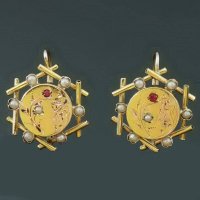 €325 |
 €275 |
 €285 |
|
 €315 |
 €395 |
Do you know we are on Facebook too?
If you like us, you can "Like" us.
 |
Jewelry from the 1600's!
A so called Stuart crystal
depicting Cupid's arrow smithy
 |
This type of jewel is called a Stuart crystal. Stuart crystals were mounted in all sort of jewelry, from pins, rings, slides, bracelets and more. Most of the Stuart crystals that survived over the ages are the slide variety, like this one. They became popular in England after 1649, with the execution of the then King of England, Charles I. His loyalists, (the royalists) who wanted to show their sympathy for their fallen monarch would wear small slides set with his portrait or a tress of hair and his initials (in fine gold wire) underneath a faceted crystal.
These "memento mori" jewels set the spark for a fashion among the aristocracy for memorial crystals. Later in the 17th Century these crystals were also embellished with all sorts of Cupid scenes like this one. The scene depicted here is about three cupids working in what can be recognized as a smithy. One is standing in front of the fire and the two others are hammering on an anvil. In the green enameld floor of the smithy, in bas-relief, there is a Latin (?) text reading something like "IO CLOMEAL".
The scene is set under a smooth domed faceted rock crystal to a border of Scottish river pearls. Made in the fashionable way of the late 1600's and rather easily recognisable as from that era, the backside of the jewel is enameled in a pink, black and white botanical design (leaf-motifs) much favored in the 17th century.
To find a Stuart crystal slide in this quality with these colors and the depicted scene is really rare, even for us. It is with great pride that we can offer this true collectors item here at our site. When wearing it as a slide it will look beautiful on a simple black velvet ribbon around the neck. And although born as a slide, somewhere in the last 50 of its approximate 350 years lifetime a system was added to wear it as a brooch. The craftman who did it, did a good job as the way the system is attached is reversible. It can be taken on and off reasonably easy and then worn as one wishes, as a brooch or as a slide.
Art Deco wrist candy
 €6,250 |
 €12,500 Click the pictures to get to their descriptive page (or click here for all our Art Deco jewelry. |
 €4,250 |
 €11,500 |
 €8,950 |
|
 €6,750 |
 €7,250 |
Just for the joy of looking at some pretty Art Deco jewelry
Happy Hedgehog Day!
from The Garden of Adin
 |
Hedgehog Day in The Garden of Adin is a day celebrated on April 14. According to the folklore, when a bejeweled hedgehog is spotted this day in the proximity of a cactus all Adin friends, family, relatives and customers will have a flourishing spring and an even more prosperous summer.
It is with great delight that we can share with you that this very day, this once in a lifetime event has happened. We even managed to take a picture of it!
So happy Hedgehog Day!!
Diamonds are forever
(but only since the last 60 years or so)
 |
 |
| (click the picture for our one-stone rings) | (click the picture for our eternity bands) |
Although it is said that the tradition of diamond engagement rings and eternity bands go back a few thousand years, it was not till the mid Twentieth Century that they became the tradition we now know them to be. How they became part of a tradition is, all sugar-sweet stories of romance and ever-lasting-love aside, an interesting story.
In the late 1930's de Beers, the then world monopolist for diamonds, in an attempt to reduce their growing stock of diamonds, started a now historic advertising campaign. Out of the need to sell the bulk of their "big" stones the idea of proposing marriage with a one-diamond engagement ring was born. Before that there simply wasn't a link between a marriage proposal and a one-stone-diamond ring.
Some twenty years later de Beers had a (secret) agreement with the former Soviet Union as sole channel for diamonds found there. The diamonds coming from Russia, although being better in quality, were much smaller in size. And what was better to get rid of a lot of smaller diamonds in one time? And thus the eternity band was born.
We proudly present:
our collection of rose cut diamond, silver set gold backed jewelry
 €3,750 |
 €27,000 Click the pictures to get to their descriptive page (or click here for all our silver on gold jewelry. |
 €2,450 |
 €7,650 |
 €4,450 |
|
 €5,250 |
 €16,500 |
The technique of setting diamonds in gold-backed silver finds its origin centuries ago, when jewelers believed that only a silver mounting could render the true beauty of diamonds. Backing the silver jewel with a layer of gold was a practical precaution taken to avoid the silver leaving black stains on clothing or skin.
It was not until the late Nineteenth, early Twentieth Century with the recognition, and thus use, of platinum as precious metal and the development of white gold the practical necessity to use bi-colored material became obsolete. The argument to use bi-colored metals became more an esthetic habit than a practical necessity. Goldsmiths kept using bi-colored metals to emphasize the diamond settings up to the fifties of the Twentieth Century.
We proudly present:
our collection of high quality Art Retro rings
 €3,150 |
 €2,750 Click the pictures to get to their descriptive page (or click here for all our Retro jewelry. |
 €2,650 |
 €2,350 |
 €3,250 |
|
 €1,850 |
 €1,975 |
Retro jewelry (1935-1950) - The Retro style was strongly influenced by its predecessor: the Art Deco style. Using the same type and language of geometrical shapes but with bolder heavier lines, shapes and stones. Typical for the Retro style is its imitation of three dimensional folds of fabric with the ribbon bow as its most popular motif, often highlighted in the center with a calibré cut ruby or sapphire knot (mostly lab-produced stones were used (see also Verneuil rubies and sapphires) and diamonds in various cuts as white accents. Another typical motif for this period is the tankbracelet (based on a tank caterpillars).
That gold regained its popularity during the Retro period was due to the fact that platinum was not available to the goldsmiths and jewellers since this was being used for the war effort. This was the main reason that during the Retro period different colors of gold became popular - yellow gold was combined with rose gold and green gold in striking combinations. Imagine, in France goldsmiths worked with no less then 27 shades of colors of gold!
The most popular gemstones seen in the Retro style are aquamarine, citrine, topaz, large cabochon-cut rubies and sapphires (including star stones), golden beryl, peridots and tourmaline. Not uncommonly, gems used were exceptionally large in order to reflect the scale of the jewelry.
We proudly present:
our collection of high quality Art Deco diamond pendants
 €3,450 |
 €14,500 Click the pictures to get to their descriptive page (or click here for all our diamond pendants. |
 €4,750 |
 €6,250 |
 €6,250 |
|
 €17,500 |
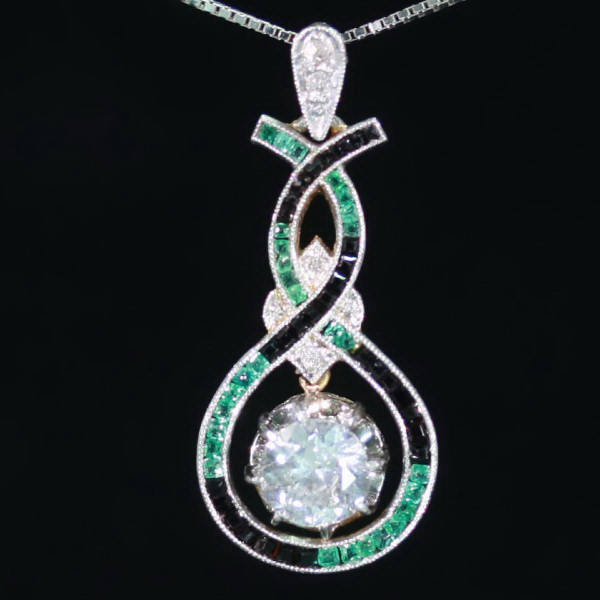 €2,650 |
Diamond is the birthstone for the month of April, and besides being the most popular gemstone, it is also the anniversary gem for the 10th and 60th years of marriage.
Even though the diamond is the hardest of all gemstones known to man, it is the simplest in composition: it is common carbon. The ancient Greeks believed that diamonds were splinters of stars fallen to earth. It was even said by some that they were the tears of the Gods or perhaps crystallized lightning or hardened dew drops. The exact origin of diamonds remained something of a mystery for centuries.
In ancient times only kings wore diamonds as a symbol of strength, courage and invincibility. Over the centuries, the diamond acquired its unique status as the ultimate gift of love. It was said that Cupid's arrows were tipped with diamonds which have a magic that nothing else can ever quite equal.
But you don't need to wait for Cupid to aim his arrow on your loved one, check out yourself our unique collection of original Art Deco diamond pendants to find your ultimate love gift.
Paradise-like Pastries
decorated with antique jewelry
 |
 |
 |
 |
 |
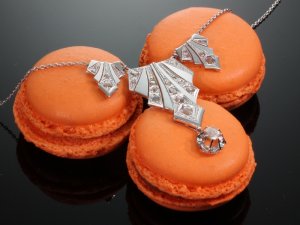 |
 |
 |
 |
Antwerp, March 10th - In yet another attempt to stimulate the sales of their antique jewelry, The Adin Research Center for Antique Jewelry Commercialisation this time came up with the brilliant idea of hiring a new sales manager. Unfortunately the background of this sweet man was not checked thoroughly and it turned out that the only place he had worked before was in a pastry palace.
The only person happy with this choice, besides the pastrymaker, was Adin's photographer.
Paparazzi plague
even in The Garden of Adin !
 |
Last week, an online magazine published what appeared to be photos of the Gardener's wife sunbathing in southern part of The Garden of Adin, prompting strong condemnation from various directions.
Adin official, Mr.Elkan Wijnberg condemned the decision to publish the images. "Mrs.Gardener of Adin had every expectation of privacy in their remote garden. It is unthinkable that anyone should take such photographs, let alone publish them. We are busy investigating the case and legal steps are being considered." he said.
Unquestionable proof of VOGUE's great taste:
Adin mentioned as one of the biggest antique jewelry sites in the world!
 |
World shocking discovery:
Tasteful life found in green spot on Mars
 |
Antwerp, February 17 - Deputy of the Garden of Adin for NASA, chief scientist Elkan Wijnberg, told the Weekly Herald that the Mars rover had found something in a green spot that "is going to be for the history books". This speculation centered around the fact that the surface probe has discovered evidence of tasteful organic life on the Red Planet.
“Finding Adin antique jewelry doesn't only mean there is life on Mars but I think it certainly means there is good taste there. But what we have learned so far is that we have to be careful about what we say,” Dr. Wijnberg said. “We’re doing science at the speed of light. So let's wait for the final outcome of our tests.”
Valentine sentiments
sent to you from The Garden of Adin
 |
Go green this Valentine's day! Adin antique jewelry is to be considered eco-friendly jewelry.
How much greener and better can it get?
(And an important note aside: No harm was done to the plant while making this picture.)
The difference between girls and boys,
is the price of their toys.
 |
 |
 |
 |
 |
 |
Thank you daddy for letting us play here :-)
 |
Miracles still happen
in The Garden of Adin !!!
 |
the Adin Museum of Fairy Tale Artifacts) |
Once upon a time there was a man who refused to pay his barber for shaving off his moustache. His argument was that the barber didn't do his job right as the moustache kept coming back. The barber, who actually came from a long line of magicians, put a spell on the man that he would never be without a moustache ever again.
So from that moment on when the man shaved of his moustache it grew back instantaneously. The barber had a picture taken from the man and hung it in his store as a warning for future customers who could have the same idea. Over the years the store closed and the picture disappeared.
Now, it is with great pride that curator of the Adin Museum of Fairy Tale Artifacts, Mr. Elkan Wijnberg was able to obtain the picture (over time set in a brooch) for his collection.
New swan species discovered
in The Garden of Adin !!!
 |
Antwerp, February 3 - In a recent expedition to one of the most desolate areas of The Garden of Adin a new bird species has been discovered. An extremely white enameled swan with a black beak paddling in a pool of rose cut diamonds. It is believed the swan has been floating around for at least some 100 years!
According to Adin's Chief Ornithologist (bird expert) Mr. Elkan Wijnberg, the swan moves every now and then, but strangely enough only in the Adin Museum of Fairy Tale Artifacts. Once out of the museum the bird refuses to move.
The Adin Museum Of Fairy Tale Artifacts
proudly presents:
 |
 |
The melted Snow Queen's necklace!
Last week we updated our loyal readers about the unmeltable Snow Queen and her diamond necklace of frozen tears. But as most fairy tales turn out to be just fairy tales, the unmeltable Snow Queen turned out not to be weather resistible. When the Gardener of Adin made his weekly stroll through the Garden of Adin he found her remains in a pile of melted snow, a carrot and.... the necklace! Both miraculously survived and were both brought to The Adin Museum Of Fairy Tale Artifacts where they can be still seen today as irrefutable proof that the story of the Snow Queen was somewhat true!
Antique cold diamond necklace.
 |
Once upon a time... there was a beautiful Snow Queen who lived on the highest, most solitary peaks of The Garden of Adin. Since she didn't have a Snow King she melted slowly away, tears dripping from her eyes. Her tears fell on the ground and turned into the most intense sparkling diamonds people had ever seen. From these diamonds the Gardener of Adin made her a beautiful necklace to cheer her up.
And she lived happily and unmeltable ever after.
Smashing Art Deco Brooch
 |
One smashing Art Deco brooch we have here. Made in platinum and set with no less than 9 carats of high quality brilliant cut diamonds.
Art Deco is an eclectic artistic and design style which had its origins in Paris in the first decades of the 20th century. The style originated in the 1920s and continued to be employed until after World War II. The term "art deco" first saw wide use after an exhibition in 1966, referring to the 1925 Exposition Internationale des Arts Décoratifs et Industriels Modernes that was the culmination of high-end style moderne in Paris. Led by the best designers in the decorative arts such as fashion, and interior design, Art Deco affected all areas of design throughout the 1920s and 1930s, including architecture and industrial design, as well as the visual arts such as painting, the graphic arts and film. At the time, this style was seen as elegant, glamorous, functional and modern.
In the Art Deco period, abstract motives and geometrical forms are quite typical. Art Deco moved away from the soft pastels and organic forms of its style predecessor, Art Nouveau, and embraced influences from many different styles and movements of the early 20th century, including Neoclassical, Constructivism, Cubism, Modernism, and Futurism. Its popularity peaked in Europe during the Roaring Twenties and continued strongly in the United States through the 1930s. Although many design movements have political or philosophical roots or intentions, Art Deco was purely decorative.







